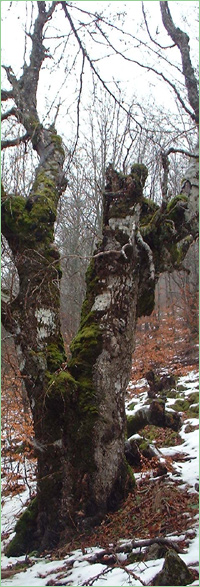Zlatni piasatsi (Unique identification code in the register: BG0000118)
Category: PZ under the Habitat Directive
Area: 1373.44 hectares Location:
1.
District: Dobrich, Municipality: Balchik, Locality: Kranevo
2.
District: Varna, Municipality: Varna, Locality: Varna
3.
District: Varna, Municipality: Аksakovo, Locality: Kichevo, Osenovo
Falls in the territory of the following Regional Inspectorates of Environment and Water (RIEW):
Varna - ul."Jan Palah" 4
Ordinance for announcement:
Ordinance No.РД-356 from 31.03.2021
2-2-118-356-2021
Record for protected zone (link):

Aims of the declaration:
1. Preservation and maintenance of the types of natural habitats specified in item 2.1, the habitats of the species specified in item 2.2, their populations and distribution within the boundaries of the zone, to achieve and maintain their favorable nature conservation status in the Black sea biogeographical region;
2. Improving the structure and functions of natural habitats with codes 3140, 91F0, 91G0 *, 91H0 *, 91M0 and 91Z0;
3. Improvement of the habitats of the species Bombina bombina, Triturus karelinii, Elaphe sauromates, Emys orbicularis, Testudo hermanni and Testudo graeca;
4. If necessary, improving the condition or restoring the types of natural habitats specified in item 2.1, habitats of species specified in item 2.2 and their populations;
Objects of protection (species or habitats):
1. Article 6, paragraph 1, section 1 from Biological Diversity Act: 3140 Hard oligo-mesotrophic waters with benthic vegetation of Chara;
3150 Natural eutrophic lakes with Magnopotamion or Hydrocharition;
8310 Caves not open to the public;
91F0 Riparian mixed forests of Quercus robur, Ulmus laevis and Fraxinus excelsior or Fraxinus angustifolia along the great rivers (Ulmenion minoris);
91G0 * Pannonic woods with Quercus petraea and Carpinus betulus;
91H0 * Pannonian woods with Quercus pubescens;
91M0 Pannonian-Balkanic turkey oak-sessile oak forests;
91Z0 Moesian silver lime woods;
2. Article 6, paragraph 1, section 2 from Biological Diversity Act: Mammals - Rhinolophus hipposideros, Myotis bechsteinii;
Amphibians and reptiles - Bombina bombina, Triturus karelinii, Elaphe sauromates, Emys orbicularis, Testudo hermanni, Testudo graeca;
Intervertebrates - Lycaena dispar, Rosalia alpina, Euplagia Callimorpha quadripunctaria, Lucanus cervus, Cerambyx cerdo, Morimus funereus, Vertigo moulinsiana, Vertigo angustior;
Plants - Himantoglossum caprinum.
Current prohibitions and regimes:
1. It is prohibited conducting races with motor vehicles outside the existing roads;
2. It is prohibited movement of motorcycles, ATVs, UTVs and buggies off existing roads in non-urban areas. The prohibition does not apply to routes for the movement of the listed motor vehicles determined on the basis of a normative act, as well as in case of disasters, emergencies and for carrying out fire-fighting, emergency, control and rescue activities;
3. It is prohibited the prospecting for minerals (construction and stone materials), creating new and expanding concession areas for extraction of minerals (construction and stone materials); prohibition does not apply in cases where the date of publication of the order in the "Official Gazette" has started a procedure for granting permits for prospecting and / or exploration and / or the concession for extraction under Subsurface Resources Act (SRA) and Concessions Act, or a procedure for their coordination under Chapter Six of the Law on environmental protection and / or art. 31 of the Biological Diversity Act or an application for registration of a commercial discovery;
4. It is prohibited changes in the hydrological regime through drainage, adjustment, dam construction within the natural boundaries of the water-dependent habitats, except: in case of danger of floods, which may lead to risk to human life and health or the occurrence of material damage; in case of disasters and accidents; to improve the condition of natural habitats and habitats of species under the item 2.
5. It is prohibited to change the way of permanent use, plowing, afforestation and conversion into permanent plantations of meadows, pastures and grassland, when using agricultural lands as such;
6. It is prohibited to remove landscape features (borders, vital single trees and groups of trees, traditional strips occupied by shrub and tree vegetation among lands under cultivation, protective forest belts, stone fences and hedges), when using agricultural land as such, except in cases to removal of invasive alien species of trees and shrubs;
7. It is prohibited the use of fertilizers, soil improvers, biologically active substances, nutrient substrates and plant protection products that do not meet the requirements of the Plant Protection Act;
8. It is prohibited the use of mineral fertilizers in meadows, pastures, grasslands, abandoned agricultural lands and forest areas, as well as plant protection products of professional category of use in these areas except for calamity, epiphytosis or the use of selective methods to combat invasive alien species;
9. It is prohibited to use of organic sludge from industrial and other waters and household waste for introduction into agricultural land without permission from the specialized bodies of the Ministry of Agriculture, Food and Forestry and when the concentration of heavy metals, metalloids and persistent organic pollutants in sludge exceeds background concentrations according to Annex № 1 of Ordinance № 3 of 2008 on the norms for permissible content of harmful substances in soils (SG, issue 71 of 2008);
10. It is prohibited to use of irrigation water that contains harmful substances and waste above the permissible norms;
11. It is prohibited burning of stubble, syllables, roadside strips and areas with dry and moisture-loving vegetation;
12. It is prohibited to make a fire, improvements, electrification, conduct of business and sports activities in the caves and caves' entrances, as well as to break, damage, to collect or to remove of rock and cave formations, and also to divide the cave's entrance or its individual galleries in a way that prevents passing of species subject to protection under item 2.2.1;
13. It is prohibited conducting speleological research during the breeding season of bats - from March 1 to June 30;
Overlapping (partial or full):
1.
Natural Park: Zlatni Pyasatsi
2.
Protected Site: Aladzha Manastir
3.
PZ under the Bird Directive: Batova

|
|

|


 Превод на български
Превод на български